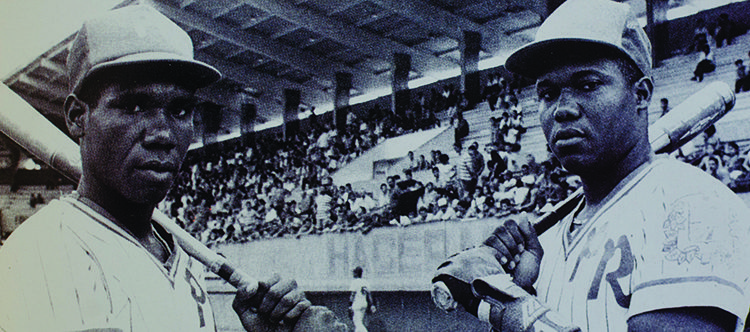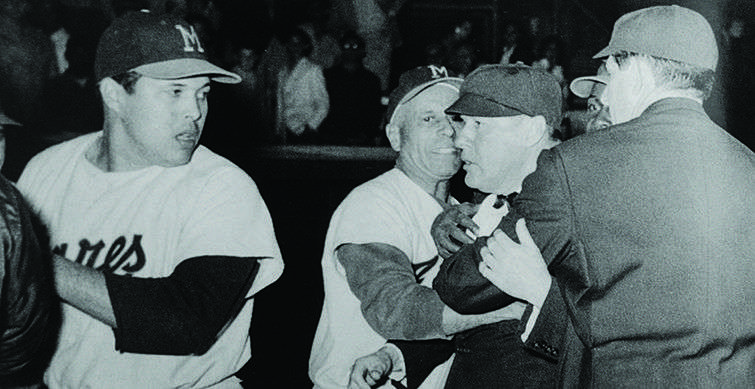By: Ismael Sené
On Oct. 21, 1939—six weeks after the National Baseball Hall of Fame was inaugurated in Cooperstown, in the United States—the Hall of Fame of Cuban professional baseball was founded.
From that date until Jan. 1, 1961, its entries featured 68 players, umpires, and officials who contributed to the development of baseball in our country.
When professional baseball was eliminated in Cuba, the Hall of Fame was left in a sort of limbo. While similar institutions opened in Mexico, Venezuela, the Dominican Republic and other countries, in ours—where baseball is not just a sport, but also part of our idiosyncrasy—the Hall of Fame was not even mentioned for many years.
The subject had come up again in recent years, but without any concrete results. Then, in August 2014, filmmaker Ian Padrón, a baseball fan and the maker of an award-winning documentary about the Industriales team, brought together 12 fans of our national pastime to create the group Enthusiasts for the Refoundation of the Cuban Baseball Hall of Fame.
Made up of historians, commentators, statisticians and artists, the group devoted itself to analyzing the creation of the first Hall of Fame and to elaborating a set of regulations to make it possible to revive it. After several months of thorough, serious, and often heated discussion, a draft set of regulations was proposed, and their basic elements were: recognizing the 68 members of the first Hall of Fame, and expanding the content of that Hall to include not just Cuban professional players but also amateur players from before the Revolution, outstanding foreign players in our tournaments, and participants in our national series. It was agreed that the Hall of Fame should be part of a Cuban Baseball Museum, or a new Hall of Fame without any exclusions based on athletes’ politics, religion, or place of residence, and considering as candidates those who have brought glory to our sport.
With the draft regulations approved, a meeting was called at the Latinoamericano stadium that included the participation of sports commentators from all over the country and officials from Cuba’s national sports authority, INDER. Other guests included Cubans and non-Cubans who follow and have written about our baseball in other countries.
The meeting, held Nov. 7-8, 2014, approved of the regulations drafted by the Enthusiasts group. A site was proposed for the museum: the José Antonio Echeverría Workers’ Social Club (also known as the Vedado Tennis Club), and it was also proposed that the annual entry be made on Dec. 29, and that the Ministry of Culture consider baseball as an intangible national cultural value.
During the meeting, a jury of 25 people was elected by direct and secret ballot to make the annual selection. Anybody who has anything to do with Cuban baseball, inside or outside the country, can make proposals for members of the Hall of Fame in October, and at least one player from before 1959 must be elected annually. The jury will be ratified or reelected every two years, in part or in whole.
Those selected in the first vote were: Conrado Marrero, the winner of more than 360 games throughout his career; Orestes Miñoso, the first black Latin American player to participate in the Major Leagues and a star of the Chicago White Sox and of Marianao; Camilo Pascual, a star pitcher of the Cienfuegos and Minnesota twins teams and record holder for most games won in the Caribbean series; Esteban Bellán, the first Cuban to play in U.S. baseball, in 1871, and winning manager of the six first seasons of the Cuban Baseball League, with Club Habana; and Amado Maestri, a respected umpire who worked in the Cuban leagues and in Mexican baseball in the period previous to our national series. For the subsequent period, those selected were: Omar Linares, the batter with the highest average in the 50 years of our national series; Orestes Kindelán, the greatest home run hitter and RBI (Runs Batted In) leader; Antonio Muñoz, holder of the second highest RBI average; Luis Giraldo Casanova, known as “El Señor Pelotero”; and Braudilio Vinent, the pitcher of the great moments of national and international baseball.










If it hasn’t happened already, I would hope that the widow of Jackie Robinson gets to hang a portrait of him in your Museum.